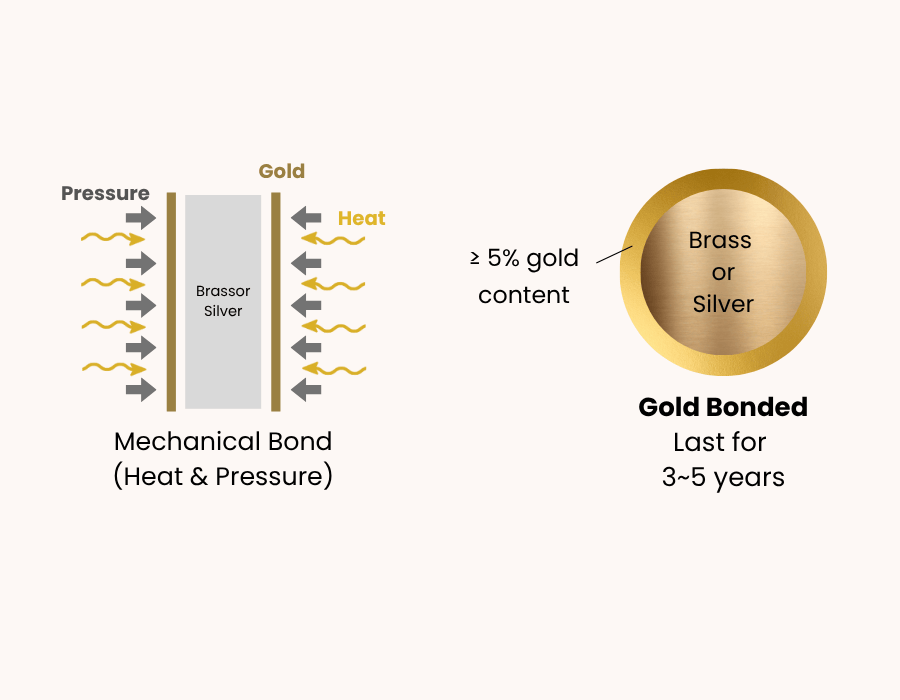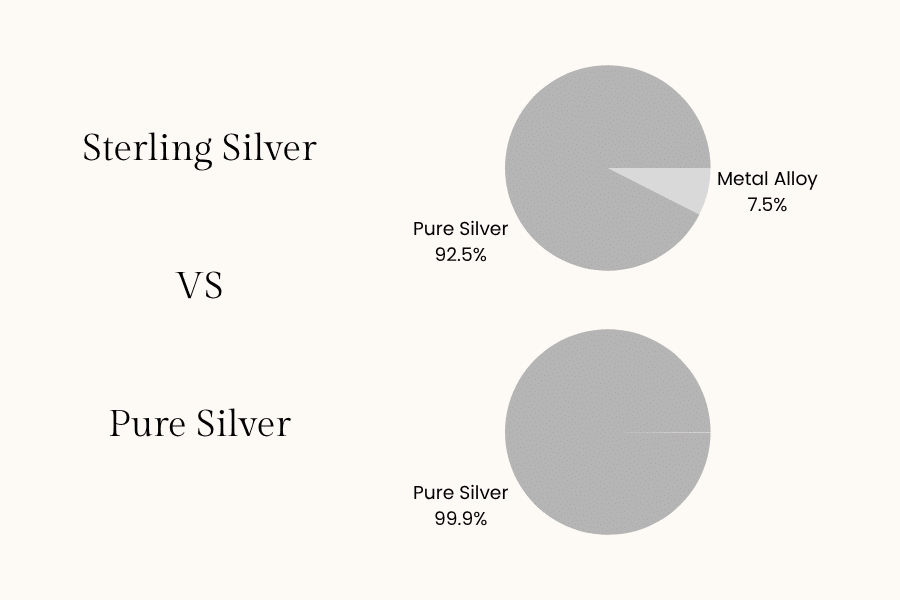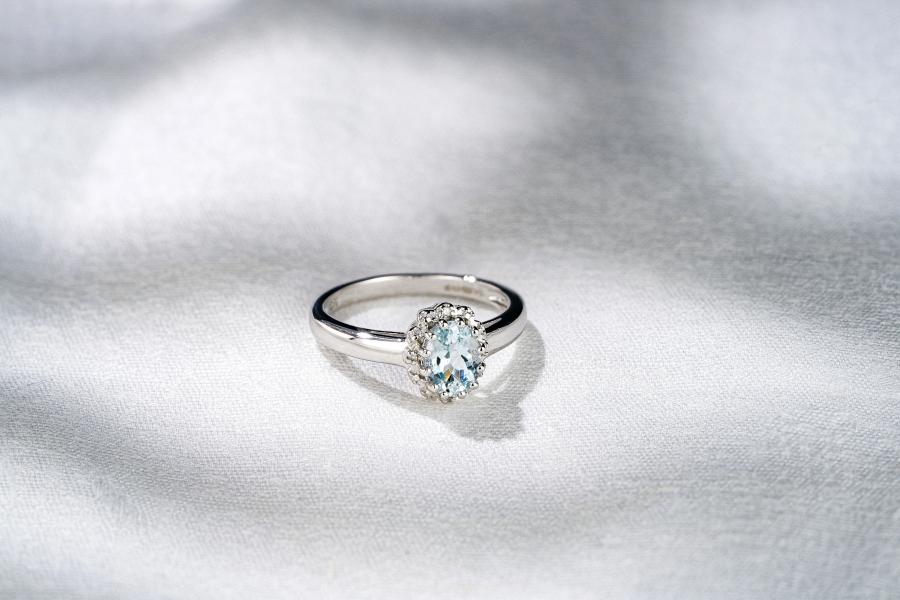Over the years, many people have been having skin dryness, rashes, contact dermatitis, and other skin reactions from wearing jewelry. These skin reactions are caused by certain metals used in making the jewelry, with a major one being NICKEL. Hence, the growing demand for hypoallergenic jewelry–pieces that are less likely to cause any reaction.
In this post, we will explain what does nickel free jewelry mean, why they are important, the specific metals that are nickel-free, and the brands that should use these metals.
What is Nickel Free Jewelry?
Nickel free jewelry refers to jewelry pieces that don’t contain a significant amount of nickel that can cause skin reactions or allergies. They are basically jewelry made without any intentionally added nickel or with such low nickel content that falls below regulatory thresholds. This makes them safe for everyone, including those with sensitive skin.
NOTE: That a jewelry is called “nickel free” doesn’t mean it’s 100% without nickel. Rather, it means that even though the jewelry contains trace amounts of nickel, it is below regulated limits.

How Much Nickel is Legally Allowed?
What really matters is the amount of nickel in the jewelry, not the presence of nickel. Below are 2 legal regulations for nickel control in jewelry:
European Union’s Nickel Directive
Regulations on nickel release vary by country, but the European Union sets one of the strictest standards through its Nickel Directive. This includes the Registration, Evaluation, Authorization, and Restriction of Chemicals (REACH) regulation (officially known as Directive 94/27/EC). It controls the amount of dangerous chemicals and heavy metals in consumer products.
This Directive stipulates that nickel release in a product must not exceed 0.5 µg/cm2/week for items that are in prolonged contact with the skin like earrings, rings, watches, etc. And for pierced jewelry, the content release must not be more than 0.2 µg/cm2/week.
California’s Proposition 65
The U.S. does not have a federal law regulating nickel content, but the California’s Office of Environmental Health Hazard Assessment (OSHHA) in Proposition 65 defined nickel (soluble compounds) to be compounds of nickel with solubility in water of greater than 0.1 moles per liter (mol/L) at 20°C.
Health Risks: Why Nickel Matters?
Once nickel content is in direct or prolonged contact with the skin, a person (particularly someone with sensitive skin) can develop Nickel Allergic Contact Dermatitis (NACD), which appears as rash or eczema on the skin of people who are allergic to nickel.

Nickel Allergy Statistics
On average 15-16% of women and 4-5% of men are allergic to nickel. It is more common in women due to early exposure to earrings and fashion jewelry.
Nickel Allergy Symptoms
The symptoms usually appear 12-48 hours after you come into contact with nickel. It shows where the jewelry makes direct contact with your skin. Common symptoms are rashes, skin dryness, blisters, swelling, and burning/stinging sensation.
It may take repeated or prolonged exposure to items containing nickel before developing nickel allergy, but once developed, the sensitivity becomes permanent. Nickel allergy is usually life-threatening, but it’s a lifelong condition, thus it’s recommended that you completely avoid it.
Metals that are Naturally Nickel-Free
To be safe from nickel allergies, the best way is to know what metals are nickel free. They include:
Medical-Grade Stainless Steel
While not always naturally nickel-free, certain grades of stainless steel like 316L surgical steel. are specially formulated to release minimal nickel. Medical-grade stainless steel is not suitable for everyone with a nickel allergy. It’s best for those with low sensitivity.
Why 316L Has Higher Nickel Content but Lower Nickel Release?
Although 316L stainless steel contains more nickel (10–14%) than 304 (8–10.5%), it typically releases less nickel (often below 0.05 µg/cm²/week) because of its superior corrosion resistance, low carbon content, and a more stable passive oxide layer. This makes 316L more biocompatible and often compliant with the ≤ 0.5 µg/cm²/week nickel release limit set by EU REACH.
NOTE: Nickel release is about stability, not quantity.

Sterling Silver and Fine Silver
Silver is a classic choice for jewelry, but not all silver is created equal when it comes to nickel sensitivity. Fine silver is composed of 99.9% pure silver, making it completely nickel-free and hypoallergenic. Sterling silver jewelry, on the other hand, is made up of 92.5% silver and 7.5% other metals (usually copper), but some manufacturers include a little quantity of nickel.

Titanium
Titanium is one of the most hypoallergenic metals available, containing 99.9% pure titanium. It’s very popular for its lightweight, corrosion resistance, and suitability for sensitive skin. Thanks to its biocompatibility, it can be conveniently used for both jewelry and medical implants, such as earrings, wedding bands, body piercings, first-time piercings, and long-term wear.

Platinum
This metal is one of the Platinum Group of Metals (PGMs). It’s made of 95% pure platinum and 5% other metal. Platinum is naturally nickel-free and considered the safest & most luxurious option for allergy-prone individuals. Some of its standout characteristics include its dense structure, durability, and resistance to tarnish. It can be used for engagement rings, wedding bands, and luxury jewelry.

High-Karat Gold
Gold in its pure form is naturally soft and nickel-free, but it’s often alloyed with other metals for durability.
- 24K Gold (Pure): 100% nickel-free but too soft for everyday wear
- 14K to 22K Gold: Generally safe if alloyed with non-nickel metals like silver or copper
- White Gold Caution: Often alloyed with nickel unless specified otherwise
NOTE: If you want gold but have a nickel allergy, stick with yellow or rose gold in 18K or higher, and always verify the alloy composition.

Is Hypoallergenic Jewelry Nickel Free?
No, hypoallergenic jewelry is not completely free of nickel. Rather, they are designed to minimize the risk of allergic reactions. Some hypoallergenic metals like 316L stainless steel or gold vermeil jewelry, may contain some nickel content, but they are less likely to cause allergic reactions.
If you know that you’re allergic to nickel, look for nickel-free labeling or metals that are naturally nickel-free like titanium, platinum, or fine silver. Hypoallergenic alone isn’t a guaranteed safe choice for everyone.
- Nickel-free is a specific claim about a known allergen. It often means safe for most wearers, not necessarily 100% nickel-free in composition.
- Hypoallergenic is a general claim about low risk of irritation.
| Metal | Nickel-Free | Hypoallergenic | Best For |
| 316L Stainless Steel | ⚠️ Low nickel release | ✅ for most | Affordable, durable everyday jewelry |
| Sterling Silver | ⚠️ Usually | ✅ | If alloyed without nickel |
| Fine Silver | ✅ | ✅ | Fashion jewelry, allergy-safe pieces |
| Titanium | ✅ | ✅ | Everyday wear, new piercings |
| Platinum | ✅ | ✅ | Premium rings, long-term wear |
| 14K-24K Solid Gold | ✅ | ✅ | High-end pieces, traditional styles |
How to Know If Jewelry is Nickel Free?
How to tell if jewelry is nickel free requires strict verification since some “hypoallergenic” jewelry may still contain nickel. Here are proven methods to verify:
- Check for Certification and Labels: Look for specific nickel-free certifications from reputable testing organizations. Verify that the entire piece is nickel-free, not just the coating. Some manufacturers may define nickel-free as only referring to the surface plating while the underlying metal is left out. Also, just how gold filled jewelry has labels that signifies the 5% of gold content present, check for labels on the jewelry that says “nickel-free.”
- Ask the Retailer or Manufacturer: Contact retailers or manufacturers directly to request detailed information about their jewelry’s metal composition. Ask specifically about nickel content in all components, including the clasps, wires, and backing materials. A professional custom jewelry manufacturer would provide documentation or certificates proving their products are genuinely nickel-free throughout.
- Nickel Testing Kits: These kits can provide results in about 30 seconds to know, allowing you to know if your jewelry has nickel. With professional jewelry testing services, you can also get comprehensive analysis for valuable items.
Jewelry Brands that Should Prioritize Nickel-Free Materials
Certain jewelry categories require extra attention to nickel content due to prolonged skin contact and sensitive customer demographics. They include:
Children’s Jewelry Lines
Kids are yet to grow tough skin that can withstand some level of harsh chemicals, making them especially vulnerable to nickel-related rashes. Thus, children jewelry manufacturers or retailers must prioritize certified nickel-free materials to comply with safety standards, allowing for prolonged wear and frequent handling.
Piercing and Body Jewelry Shops
Body piercing jewelry requires the highest standards for nickel-free materials since it comes into direct contact with open wounds and healing tissues. They should be completely nickel-free, biocompatible, and include hypoallergenic earrings metal like titanium, platinum and surgical steel. This will guarantee lifetime convenience and avoid complications during healing.
Bridal and Engagement Jewelry Brands
Wedding and engagement jewelry is worn daily for years, thus requiring that they are nickel-free for long-term comfort. Brands focused on this niche should use platinum, 18K+ gold, or nickel-free alloys to prevent irritation while maintaining luxury quality.
Sustainable and Ethical Jewelry Brands
Brands marketing themselves as eco-conscious or ethical should align their material choices wit customers’ wellness, making nickel-free and hypoallergenic metals a responsible standard. Priority should be to materials that offer sustainability and long-term comfort.
Does Nickel Free Jewelry Turn Green?
Nickel-free jewelry usually doesn’t turn your skin green, but it depends on the metal used in making the jewelry. While pure metals like titanium and platinum won’t make the skin green, copper-based alloys (like brass or sterling silver) might if they oxidize. The green tint is not caused by nickel itself. Instead, it’s caused by a reaction between the metal and skin acids, sweat, or lotions.
Does Nickel Free Jewelry Tarnish?
Yes, some nickel-free jewelry can tarnish, but it depends on the metal composition. For example, sterling silver and copper alloys may darken over time because of oxidation, but metals like titanium, platinum, 316L stainless steel, and solid gold are highly resistant to tarnishing.
Can You Shower with Nickel Free Jewelry?
It depends on the material. Nickel-free metals like titanium, platinum, surgical-grade stainless steel, and solid gold are generally safe to wear in the shower. But nickel-free sterling silver and plated jewelry are not ideal for showering because soap and water can cause tarnishing or degrade the finish over time.
Is Stainless Steel Jewelry Nickel Free?
Not entirely. Most stainless steel jewelry contain and release nickel. However, certain stainless steel grades like 316L (surgical steel) release very low nickel, making them safe for most people with mild sensitivities. This is not to say they are 100% nickel-free, so individuals with severe nickel allergies should choose pure metals like titanium, fine silver, platinum, or high karat gold.
Conclusion
It’s important that you understand metal content (especially nickel) in jewelry, considering the amount of threat it poses to the skin. Choosing nickel free jewelry made with metals like titanium, platinum, silver, medical-grade stainless steel, and high carat gold is important to prevent nickel allergies.


